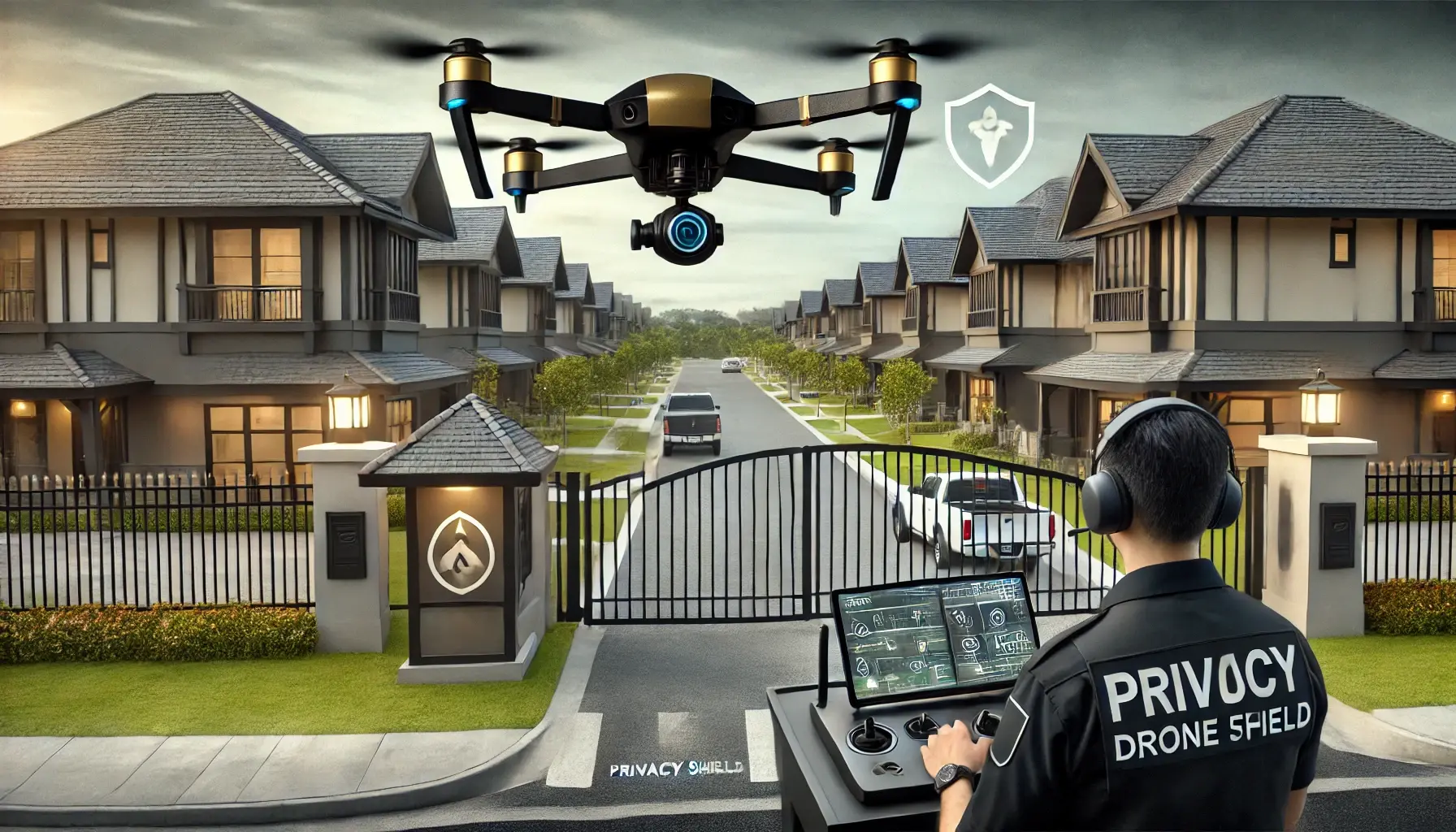Top 5 Reasons Homeowner Associations Should Consider Drone Security
Homeowner associations (HOAs) have a critical role in maintaining the safety, exclusivity, and reputation of residential communities. Traditional security methods, while effective to some extent, often struggle to keep up with modern challenges such as large perimeters, limited manpower, and the need for privacy compliance. Drone security provides a cutting-edge solution, combining cost efficiency, comprehensive coverage, and non-intrusive monitoring to meet these demands. Here are the top five reasons HOAs should consider implementing drone security. Need help setting up aerial drone security for your gated community?
1. Cost Efficiency Without Compromising Quality
The Challenge: Traditional security systems, such as static cameras and on-ground patrols, require significant investment in manpower, infrastructure, and maintenance. Balancing cost and quality can be difficult, particularly for smaller HOAs with limited budgets.
How Drones Help: Drones reduce the reliance on extensive security staff and static equipment, offering a cost-effective alternative. A single drone can patrol large areas, eliminating the need for multiple cameras or guards.
Key Benefits:
-
Reduced manpower costs.
-
Lower infrastructure investment compared to traditional systems.
-
Scalable options for communities of all sizes.
Example: An HOA in a mid-sized gated community replaced static cameras with drones, reducing their annual security budget by 30% while improving coverage.
2. Comprehensive Coverage and Proactive Monitoring
The Challenge: HOAs often oversee large neighborhoods with multiple common areas, entrances, and perimeters. Monitoring all these zones effectively in real-time is challenging with traditional systems.
How Drones Help: Equipped with high-resolution cameras and thermal imaging, drones provide a bird’s-eye view of the entire community. They can patrol large perimeters, monitor common areas, and provide live feeds for security teams to act swiftly.
Key Benefits:
-
Elimination of blind spots.
-
Proactive detection of suspicious activity.
-
Real-time response capabilities.
Example: A gated community with over 200 homes deployed drones to patrol the perimeter and common areas. The drones’ thermal imaging identified and deterred several unauthorized access attempts.
3. Privacy Compliance and Resident Trust
The Challenge: Residents in upscale communities value their privacy and may have concerns about intrusive security measures. Ensuring compliance with privacy regulations is also a legal requirement for HOAs.
How Drones Help: Modern drones are designed with privacy in mind, focusing only on public or designated areas. Features like geofencing ensure that drones do not monitor private properties without authorization.
Key Benefits:
-
Transparent and privacy-conscious monitoring.
-
Compliance with local regulations.
-
Increased resident trust in security measures.
Example: An HOA implemented drone security with a clear policy outlining geofencing boundaries and encrypted video feeds, assuring residents that their privacy was protected.
4. Enhanced Neighborhood Reputation
The Challenge: Safety is a significant factor in maintaining the reputation and property values of a gated community. Security lapses or incidents can harm the neighborhood’s image and deter potential residents.
How Drones Help: The visible presence of drones patrolling the community reinforces a sense of safety and exclusivity. Potential residents view drone surveillance as a sign of a modern, well-protected neighborhood.
Key Benefits:
-
Improved community appeal to prospective buyers or renters.
-
Enhanced perception of HOA’s commitment to resident safety.
-
Protection of property values.
Example: A luxury gated community promoted its drone security system as a unique feature in its marketing materials, attracting more interest from prospective residents.
5. Scalability and Customization
The Challenge: HOAs manage communities with varying sizes, layouts, and security needs. A one-size-fits-all approach rarely works, requiring solutions that can adapt to unique requirements.
How Drones Help: Drone security systems are highly scalable and customizable. Whether it’s a small gated neighborhood or a sprawling residential complex, drones can be programmed to meet specific needs, such as monitoring particular areas during peak hours or responding to alarms.
Key Benefits:
-
Flexibility to adapt to community changes or expansions.
-
Customizable patrol routes and schedules.
-
Compatibility with existing security systems.
Example: An HOA managing a growing neighborhood added additional drones to their fleet as new homes were constructed, ensuring seamless security coverage without overhauling the system.
Key Features of Drone Security for HOAs
| Feature | Importance |
|---|---|
| High-Resolution Cameras | Provides clear visuals for effective monitoring. |
| Thermal Imaging | Enables surveillance during low-light conditions. |
| AI-Powered Analytics | Detects anomalies and identifies potential threats. |
| Geofencing | Ensures privacy by restricting operations to specific zones. |
| Automated Patrols | Reduces reliance on manual operations. |
| Integration Capabilities | Works seamlessly with existing security systems. |
Benefits of Drone Security for HOAs
-
Cost Efficiency: Reduces the need for large security teams or extensive infrastructure.
-
Comprehensive Monitoring: Ensures no area of the community is left unmonitored.
-
Privacy-Conscious Design: Respects resident privacy while ensuring safety.
-
Enhanced Reputation: Positions the community as modern and well-protected.
-
Scalable Solutions: Adapts to the unique needs of any neighborhood.
Frequently Asked Questions (FAQs)
Q: Are drones suitable for smaller HOAs? A: Yes, drones are highly scalable, making them cost-effective for both small and large communities.
Q: How do drones ensure privacy for residents? A: Drones use geofencing to focus only on designated public areas and employ encryption to secure video feeds.
Q: Can drones operate at night? A: Yes, drones equipped with thermal imaging and night vision are effective in low-light conditions.
Q: How do drones integrate with existing security systems? A: Most drone systems can connect seamlessly with access control, alarms, and CCTV networks for a unified security approach.
Q: Are drones cost-effective compared to traditional security measures? A: Absolutely. Drones reduce costs by minimizing the need for manpower and static infrastructure while enhancing coverage and efficiency.
.png)
.png)
.png)

.png)
.png)

.png)
.png)
.png)
.png)
